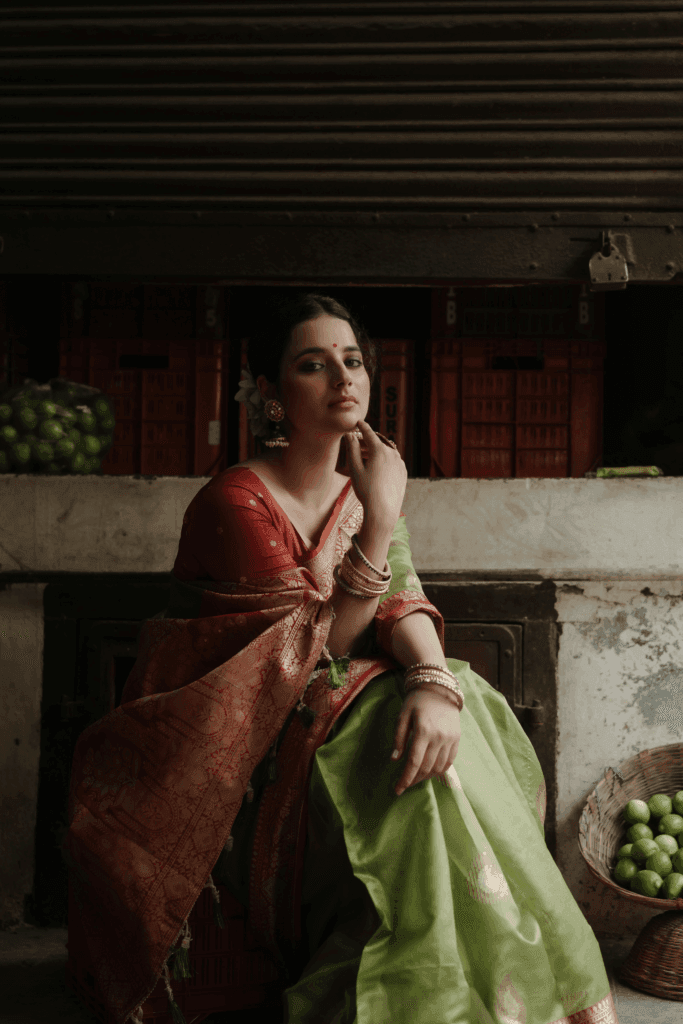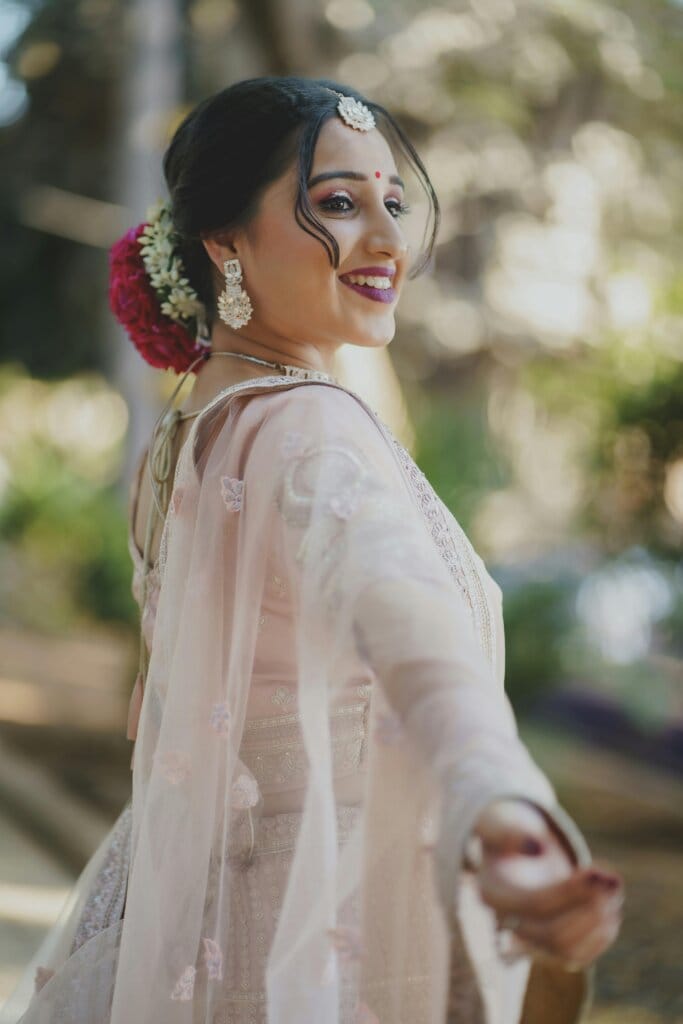Sarees are not merely garments; but also woven stories of art, tradition, and culture. Each fold, motif, and thread carries the essence of India’s rich heritage, making sarees an eternal symbol of grace and elegance. If you wish to delve deeper into the craftsmanship and cultural significance behind sarees, this saree glossary is your gateway. Here, we uncover the most essential saree terms, helping you appreciate these artistic marvels with new eyes.

Saree terminology
Pallu
The pallu is the ornate end of the saree that gracefully drapes over the shoulder. This saree essential is often adorned with elaborate zari work, intricate embroidery, or sparkling embellishments, the pallu is a stunning focal point of any saree. It effortlessly elevates the saree’s beauty while catching both light and admiration.
Blouse

The blouse is the tailored companion to the saree, available in an endless variety of styles. From minimalist high-neck designs to daring backless cuts, the blouse is key to personalizing your saree look. Crafted in matching, contrasting, or complementary fabrics, a well-chosen blouse transforms the entire outfit.
Border
The border is the decorative edge that runs along the saree’s length, often featuring exquisite embroidery, woven patterns, or rich zari work. Borders add definition and elegance. They enhance the saree’s overall character.
Zari
Zari refers to the delicate metallic threads—traditionally gold or silver—woven into the fabric to create intricate patterns and motifs. This ancient craft imparts a regal, timeless charm, particularly to festive or bridal sarees.

Ikat
Ikat is an extraordinary resist-dyeing technique. It involves tie-dyeing the threads before they are woven into fabric. The result? Mesmerizing blurred patterns unique to sarees from Odisha, Andhra Pradesh, and Gujarat. Each Ikat saree is a piece of unparalleled craftsmanship.
Banarasi
Hailing from Varanasi, the Banarasi saree is synonymous with grandeur and tradition. Rich silk fabric, heavy zari work, and Mughal-inspired motifs make this saree the ultimate choice for weddings and grand celebrations. It is the epitome of opulence.
Kanjeevaram (Kanchipuram)
The Kanjeevaram saree is the pride of Tamil Nadu. Woven from pure silk, these sarees are famous for their bold temple borders, striking colors, and enduring craftsmanship. A single look at a Kanjeevaram saree speaks volumes about South India’s rich legacy.

Chikankari
From the land of Lucknow, Chikankari is a breathtaking embroidery style. Using white thread on fabrics like cotton, georgette, or chiffon, artisans craft intricate floral and paisley designs that radiate understated elegance. A Chikankari saree is a masterpiece of simplicity and sophistication.
Jamdhani
A handwoven marvel, the Jamdhani saree from Bengal is crafted on brocade looms. These sarees feature lightweight fabric adorned with delicate, intricate motifs. Jamdhanis have a luxurious appeal. They are perfect for effortless wear during festive occasions.
Patola
The Patola saree is a double-ikat wonder from Gujarat, admired for its precision and vibrancy. Featuring geometric patterns and bold colors, Patola sarees showcase unmatched artistry, making them rare treasures.
Chanderi
From Madhya Pradesh, the Chanderi saree is cherished for its feather-light fabric, delicate zari borders, and charming butis (small motifs). These sarees strike the perfect balance between elegance and comfort, ideal for both formal and semi-formal occasions.
Gota Patti
An intricate applique embroidery style from Rajasthan, Gota Patti involves stitching shimmering gold or silver ribbons onto sarees. The result? Eye-catching patterns that make these sarees perfect for bridal wear and festive celebrations.
Heirloom Sarees
Heirloom sarees are treasures passed down through generations. These sarees are worn and loved by women of all ages. They hold craftsmanship as well as deep emotional value. They are living relics of history, heritage, and family traditions.
Why Understanding Saree Terminology Matters
Every saree tells a story, woven with love, skill, and tradition. An understanding of terms like zari, pallu, or Chikankari helps you to see beyond the fabric. You begin to recognise the artistry, time, and culture embodied in each piece. Shopping for a handloom marvel, a bridal silk, or an everyday classic, this saree glossary will guide you toward appreciating these extraordinary creations.
Knowledge of saree terms empowers you to make informed decisions, curating a wardrobe that reflects both style and culture. It also allows you to honor the artisans, weavers, and traditions that bring these stunning pieces to life. With the help of this saree glossary, you can explore sarees with confidence and a deeper understanding.
The Power of the Saree: Elegance that Lasts Forever
A saree is more than just attire. It is an icon of empowerment, beauty, and timelessness. From the shimmering Banarasi to the breezy Chanderi, every saree embodies India’s soul—rich, vibrant, and eternal. By learning these terms in this saree glossary, you take the first step toward embracing the saree’s enduring legacy and unmatched elegance.
So, the next time you wear or admire a saree, remember the stories hidden in its folds, the artistry of its motifs, and the culture woven into its fabric. Celebrate the saree for what it truly is—a magnificent work of art. Let this saree glossary be your guide as you step into the world of timeless tradition.


